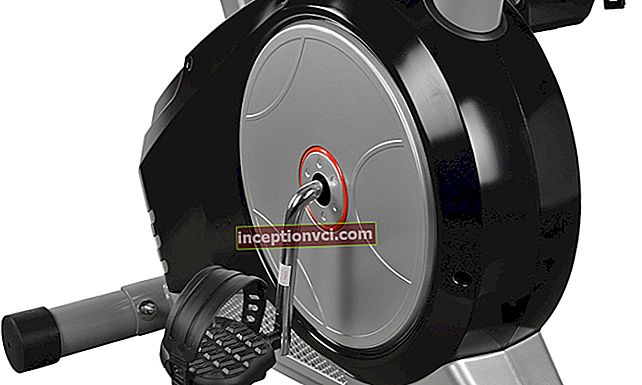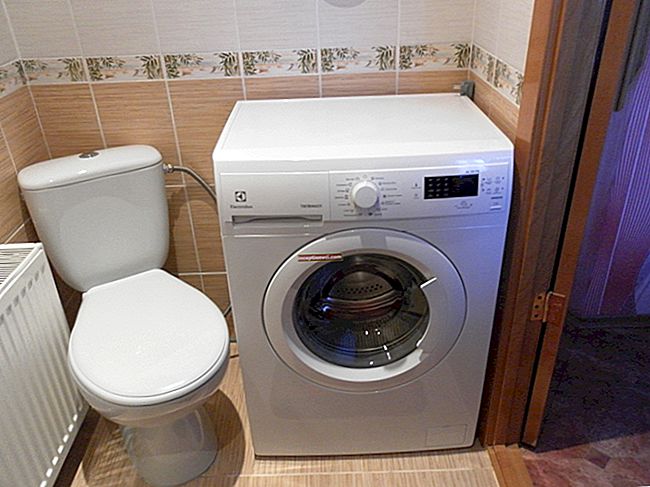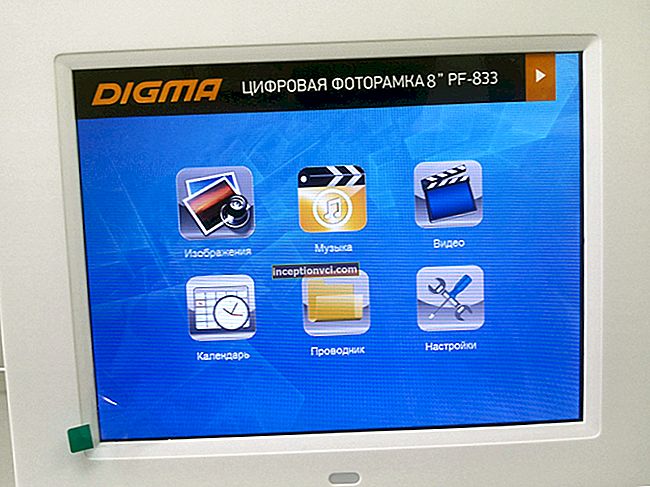The three leaders in the SLR camera market are represented by such well-known companies as Canon, Nikon and Sony. A little behind them is the Japanese company Pentax, which specializes in the production of optical equipment. Entry-level DSLRs are particularly popular with the company's customers. One of these cameras is the Pentax K-500.
Design and ergonomics
Both externally and functionally, the Pentax K-500 is similar to the older model K-50, with which it simultaneously appeared on the market. Unlike the K-50, the body of the K-500 is not resistant to cold, water and dust.

The camera is available in a single color option - black.
The device is very ergonomic. The comfortable handle allows you to hold the device securely in your hand.
Location of controls
On the top panel of the Pentax K-500 there is a "hot shoe" (a special connector for connecting an external flash), a built-in flash (hidden in the body), a shooting mode dial, a shutter button with a camera on / off lever, a control wheel (responsible for controlling shutter speed), exposure adjustment key and exposure reset key (marked with a green dot).

On the left side of the device there is a RAW / Fx key, designed to activate shooting photos in RAW format. This button can be reassigned.
Most of the rear panel of the device is occupied by the display. Above the display are the viewfinder, the LV button and another control wheel (responsible for controlling the aperture). The LV key switches the camera to Live View. In playback mode, this button is responsible for deleting unwanted images. Using the control wheel in view mode, you can change the scale of the image.

To the right of the screen are buttons "INFO" (changes the type of information displayed on the display) and "MENU", a multifunctional navigation pad, a key to switch to the playback mode and an AF / AE-L button (responsible for locking autofocus and exposure). Navipad consists of five buttons - four on the sides and one in the middle. In addition to navigating the in-camera menu, you can quickly adjust individual shooting parameters using the navigation buttons. The "Up" button is responsible for controlling the light sensitivity, using the "Down" button you can adjust the white balance, the "Left" button allows you to change the flash mode and the "Right" button allows you to select the shutter mode.
In addition to the supplied lithium-ion battery D-LI109, the camera's battery compartment can be used with four AA cells (batteries or rechargeable batteries) with a dedicated adapter D-BH109.

Main functional features of the camera
The Pentax K-500 is equipped with a 16 megapixel CMOS sensor. The device has a large and bright professional viewfinder with glass pentaprism. The camera's viewfinder covers 100% of the frame.
The diagonal of the liquid crystal display of the camera is 3 inches, and the resolution is 921000 pixels.
The maximum burst speed in JPEG format is 6 frames per second, in RAW format - 4-5 frames per second.
Shooting modes
The shooting modes of the Pentax K-500 are switched by a dial located on the top panel of the device. The user is offered 9 preset shooting modes:
1. AUTO (the icon is marked in green). The camera automatically selects the scene and adjusts all parameters depending on the shooting conditions.
2. Video filming.
3. Programmed automatic mode (P). In this mode, the exposure parameters are set automatically.
4. Photosensitivity priority mode (Sv). In this mode, the photographer sets the ISO value, and the aperture and shutter speed are already set automatically.
5. Aperture priority and shutter speed (TAv) mode.This mode is the opposite of the sensitivity priority mode. The user sets the shutter speed and aperture values, and the ISO value is automatically set.
6. Shutter priority mode (Tv). In this mode, the photographer sets the shutter speed (in the range from 30 to 1/6000 seconds), and the aperture is already set by the camera.
7. Aperture priority mode (Av). In this mode, the photographer sets the aperture value and the shutter speed is determined automatically.
8. Manual mode (M). The user sets the values of aperture and shutter speed independently.
9. Excerpt by hand (B). This mode is intended for shooting in low (night) lighting conditions or for obtaining special effects, for example, a blurred trail when shooting a moving subject. In this mode, the frame window opens when the shutter button is pressed and closes when it is released.
In addition to these preset modes, two user modes (U1 and U2) can be seen on the disc.
The position of the shooting mode dial on the SCN icon gives the photographer access to the scene programs. There are nineteen of them in total: Portrait, Freeze frame (shooting moving objects in low light), Landscape, Silhouette (drawing a silhouette in backlight), Macro photography, Children, Sports, Night portrait, Still life, Sunset, Blue sky, Night scene, Forest, HDR (High Dynamic Range) Night Scene, Night Scene (Low Light Snapshot), Pets (for Pets), Beach (Snow), Candle, Museum.
Working with the camera
The in-camera menu of the Pentax K-500 is divided into five sections: shooting menu, video recording menu, playback menu, settings and custom settings.
In the "Settings" section of the menu, parameters are set that are not directly related to the shooting and viewing processes. Here you can set the date, time, select the interface language, font size, sound effects, screen brightness level. In the same menu item, you can create new folders and add copyright information to photos.
In the custom section, you can customize the camera to suit your preferences. There are 20 items in this menu section: exposure compensation step, sensitivity change step, exposure metering time, bracketing order, manual exposure setting, fine-tuning autofocus, and so on.
Before taking a photo, the photographer can choose one of eleven digital styles: Vivid, Monochrome, Natural, Subdued, Portrait, Art, Landscape, Ultra Color, Bleach Bypass, Slide, Cross Process. Each of the styles is customizable.
You can transform the image using color filters. There are seven of them: Color Extraction (the whole image becomes black and white, only one or two colors stand out), Color Invert, Toy Camera, High Contrast, Retro, Gradient, Color (a choice of 6 shades). Filters can be adjusted. Their intensity is adjustable.
The High Dynamic Range (HDR) mode is used to shoot frames in which there may be dark or overexposed areas. In this mode, the dynamic range of photos is expanded by combining frames taken with different exposures. In this mode, a series of three frames is taken, then light areas are taken from dark images, and dark areas from light ones, on the contrary, and are combined into one photo. The width of the bracket can be adjusted either manually or automatically. Shooting can be done without a tripod.
In addition to HDR, Dynamic Range Control functions include Shadow Compensation and Highlight Compensation. These functions allow you to avoid the appearance of too dark areas or overexposed areas in the images. These functions can work automatically. The photographer can adjust the degree of their effectiveness.
The focusing area of the Pentax K-500 can be selected from several options: focusing on the center point, manual selection of the focusing point, automatic selection in 5 points, automatic selection in 11 points.Focusing can be manual, tracking and single-frame.
Time-lapse photography can take up to one thousand photos at a maximum interval of 24 hours.
The built-in noise reduction system can be flexibly configured by the user. The photographer can set the intensity levels for different sensitivity values. In addition, you can adjust the intensity of noise reduction using the standard items (Auto, Off, Weak, Normal and Strong).
In the playback mode, the amount of information displayed on the display can be adjusted using the INFO key. When this button is pressed, thumbnails of information display options appear on the screen. The choice of the display type slows down the work with the device.
Information on the screen in viewing mode can be displayed in the following modes: Standard display, Detailed display, Histogram display, RGB histogram display, Display without information.
Photos on the screen in playback mode are displayed in the form of a matrix consisting of small thumbnails. The display can display simultaneously 4, 9, 16, 36, 81 frames. Photos can be displayed in the form of a calendar-film, that is, the viewed frame occupies most of the screen, at the bottom there are thumbnails of other photos, scrolling to the right and left, like frames on a film. Photos can be sorted by shooting dates and folders.
The rear control wheel is used to zoom in a photo, and the front control wheel is used to scroll through the photos. Navigation buttons allow you to navigate the zoomed photo.
Various digital filters can be applied to captured frames: Monochrome, Beams, Color Extraction, Fisheye, Camera Editor, Posterization, Retro, Watercolor, High Contrast, Sketch Filter, Color, Gradient, Color Inversion, Tone Compensation, Pastel, Miniature, Soft, Aspect Ratio and Change of basic parameters. The older model K-50 has a similar set of filters.
All filters have a separate adjustment.
The Color Extraction filter allows you to select two colors in a photo and make the rest of the image black and white. Depending on the subject of photography, the photographer adjusts the color tolerance width.
The Color Invert filter is a color negative. The Tone Compensation filter is similar to HDR, darkening highlights unnaturally. The Fisheye filter does not very realistically simulate the operation of the ultra-wide-angle lens of the same name. The Rays filter adds rays to bright and shiny parts of an image. Some filters, when transforming an image, create painting effects - "Sketch" (drawing with a pencil), "Watercolor", "Pastel". Use the Change Baseline filter to adjust the contrast, saturation, and brightness of an image.
Live View
The aspect ratio of the Pentax K-500 screen is 4: 3, which does not correspond to the full frame of the 3: 2 matrix. Therefore, in Live View mode, the picture does not occupy the entire screen: black stripes remain at the top and bottom. All the necessary information about the parameters is displayed along the edges of the photo.

In the intra-chamber menu, you can adjust the amount of information displayed on the display.
When you focus (half-pressing the shutter button), the selected exposure settings and focus area are displayed on the screen. A white outline appears around objects that are in focus when the Edge Enhancer is active.
One of three suggested grid options can be displayed on the screen. The grid allows you to create the optimal composition of the frame.
The device has the ability to display a histogram.
In order to clearly see too dark and overexposed areas in the photo, you need to activate the "Bright / dark zones" function. After enabling this function, overexposed areas start blinking red, and dark areas - yellow.
Filming
Pentax K-500 is capable of shooting video in VGA, HD (1280x720 pixels) and
Full HD (1920 x 1080 pixels).Full HD shooting can be done at 24, 25 or 30 frames per second. HD video can be shot at 24, 25, 30, 50 or 60 frames per second.
Unfortunately, the camera records monaural audio during video recording. In addition, there is no jack for connecting an external microphone on the device's case.
Before starting video shooting, you can adjust the exposure parameters, select the recording quality, color style, apply a digital effect, and adjust the volume.
Output
The Pentax K-500 is a quality entry-level SLR camera. It has a large display, 16-megapixel CMOS sensor and a bright viewfinder. The strengths of the camera include high burst shooting speed, ample photo processing capabilities, Full HD video recording and the ability to choose a power source. Unfortunately, the Pentax K-500 is equipped with a non-swiveling monitor that does not allow taking photos from unusual angles. But the main disadvantages of the camera are mono sound recording and the absence of a jack for connecting an external microphone. That is why the Pentax K-500 is not the most suitable camera for photographers who value high-quality video shooting.









